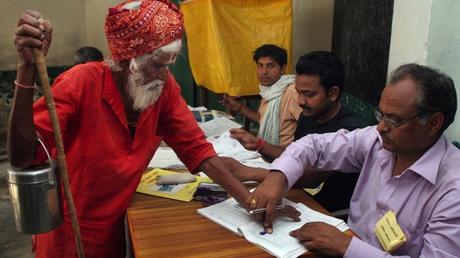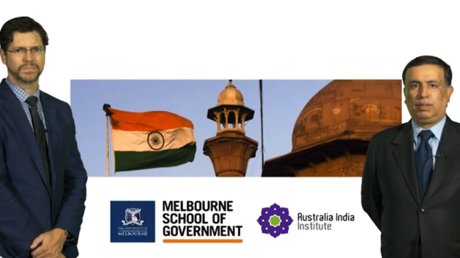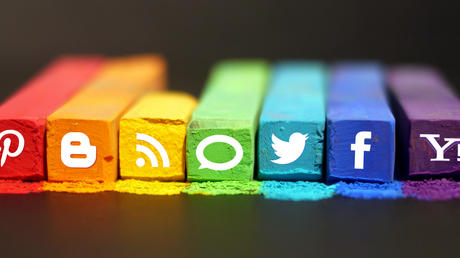INDIA may not be the world’s oldest democracy but it is certainly the biggest. The next elections for its parliament will be the largest ever, with a total of 814 million people eligible to vote – 100 million more voters than the last elections five years ago.

The Election Commission of India has the unenviable task of completing this process by May 16. Its first challenge was to find suitable dates for the polling to take place in a phased manner across 35 states and territories. In India, polling can occur on any day of the week, but a number of factors had to be taken into account (high school examination schedules, national and regional holidays and, importantly, crop harvesting) before selecting the polling dates.
Polling for the 543-seat Lok Sabha (lower house) will take place in nine phases, starting on April 7 and concluding on May 12, with the counting of votes to follow on May 16 and the results announced the same day.
Anyone over the age of 18 is eligible to vote. Voting is not compulsory and turnout in the past few elections has averaged about 59%.
These elections will not affect the make-up of India’s upper house. The members of the upper house (Rajya Sabha, or the “Council of States”) of India’s bicameral parliament are indirectly elected by the state assemblies.
India is ahead of many developed countries in the use of electronic technology for elections. All voting is by electronic voting machines. Each candidate’s name and their party’s election symbol appear on the voting machine.
Electoral rolls are fully computerised and are available in the local language in each state. For the first time, voters have the choice to express their disapproval of all the candidates by pressing the NOTA (none of the above) button on the voting machine.
The upcoming elections are set to be the most keenly fought contest since 1977, when the Congress party government of Indira Gandhi was comprehensively defeated following a 21-month period of “Emergency”, during which she ruled by decree and imprisoned almost the entire opposition. But Gandhi was back in power after winning the 1980 elections. The Janata (People’s) Party government that succeeded her collapsed before completing its full five-year term because of internal divisions.
No single political party has won in its own right since the 1984 elections. Riding a wave of sympathy, the Indian National Congress under Rajiv Gandhi’s leadership won a massive majority following the assassination of his mother, Indira Gandhi, in October that year.
Coalitions of national and regional parties have ruled the country for the past two decades. These include the outgoing government of the United Progressive Alliance (UPA), led by prime minister Manmohan Singh of the Congress Party. This year’s elections are also unlikely to produce a single-party government.
An important feature of Indian politics in recent times has been the rise of identity-based political parties, representing regional, linguistic, religious and caste identities. The outgoing parliament has 39 parties represented.
Although Singh has ruled out making another bid for the prime ministership, his party and the UPA coalition he leads are widely tipped to lose the elections. While the UPA government could be rightly proud of its economic, social and foreign policy achievements in its first term (2004-09), its second term has been marred by revelations of corruption, a sluggish economy and ineffectual foreign policies.
The opposition Bharatiya Janata Party (BJP) is leading in the opinion polls but it too does not expect to win a majority of seats. It would need to win more than 200 seats in India’s first-past-the-post electoral system to be able to retain the support of its allies in the National Democratic Alliance (NDA) and woo new allies.
The BJP has never won more than 184 seats. If it does form the next government, Narendra Modi, the controversial chief minister of Gujarat state, who has never been a member of the national parliament, will be prime minister.
India by numbers
|
But the outcome of the election is far from certain. If the BJP fails to gain enough seats to retain the support of its allies, a “third front” of communist and regional macro and micro parties may be able to form the government. India’s past experiments with third-front governments have not been very successful. Such governments have failed to complete full terms.
India’s influential business community is also unlikely to favour an unstable third-front government. Many of the “captains of industry” have lined up to support Modi. He is campaigning on his own record of development and good governance in his home state of Gujarat, which he has ruled since 2001.
But it is another aspect of his governance of Gujarat that has polarised public opinion about Modi. On his watch in 2002, Gujarat witnessed one of the worst communal riots in its history. His critics accuse him of at best failing to protect up to 2000 people, mostly Muslims, who were killed by frenzied mobs and, at worst, of complicity in their deaths.
Modi has consistently denied playing any role in the riots, nor has any court in India found him guilty. But he remains a divisive figure. The country’s sizeable Muslim minority (about 13% of the population) are unlikely to be among his biggest supporters.
There is also the possibility that the Aam Aadmi (Common Man’s) Party (AAP), which made a spectacular debut in the recent Delhi state elections, could snatch crucial seats from Modi’s party.
Whatever the outcome of this election, the simple fact that a complex society of 1.25 billion people manages to elect its government through the ballot is a win for democracy. The sheer scale of this exercise in democracy is mind-boggling.
This article was first published at The Conversation.





